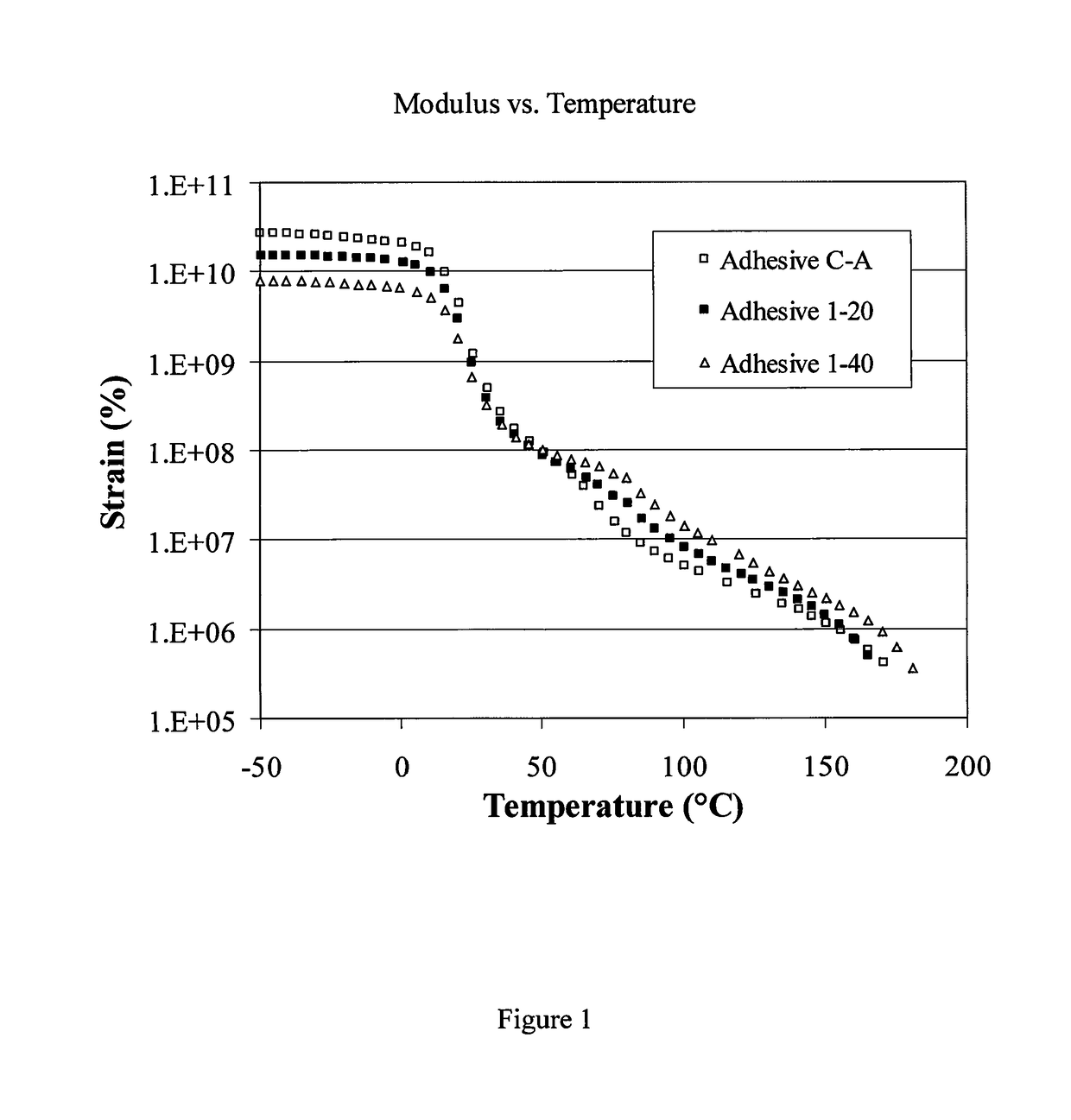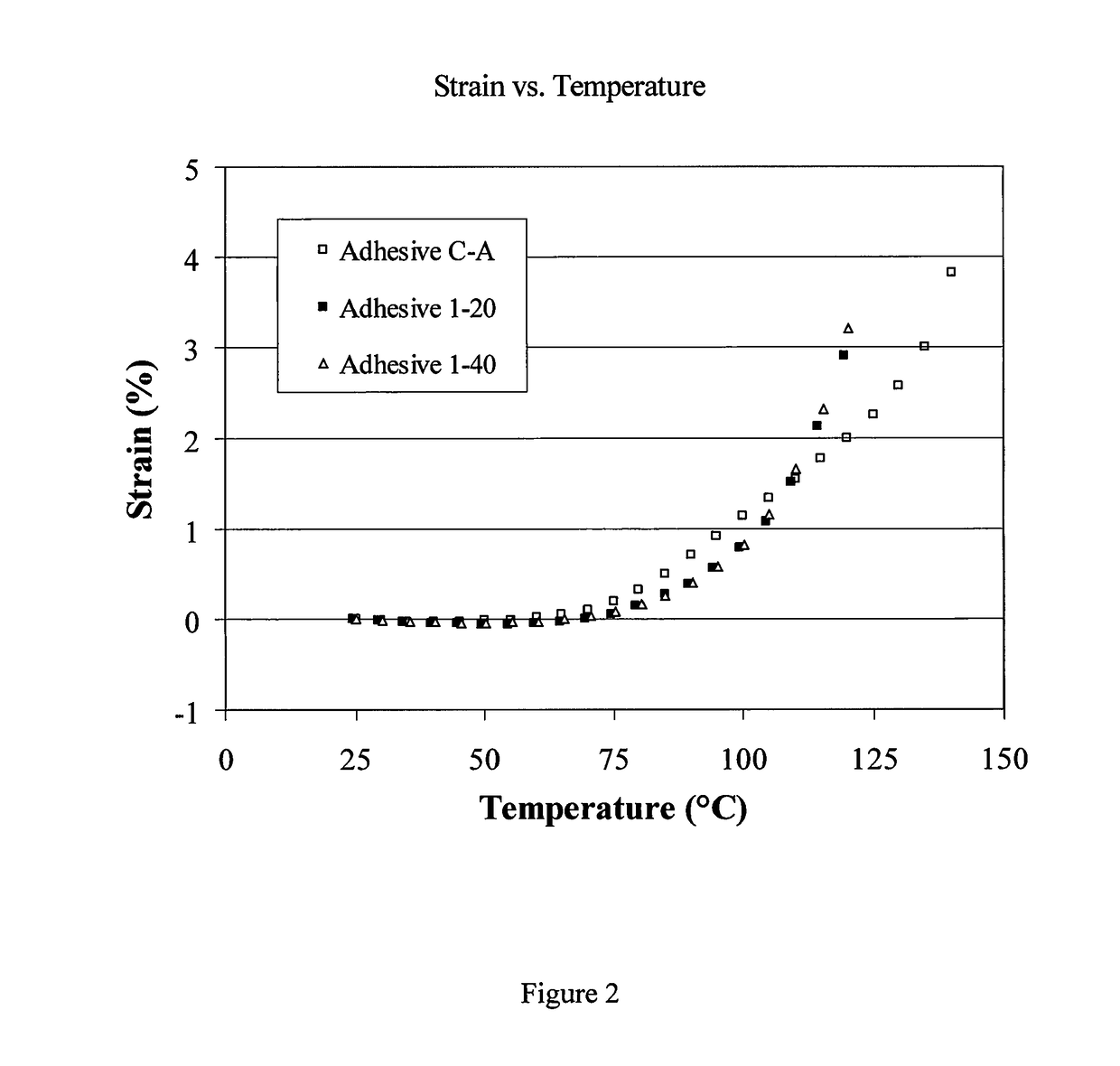Waterborne adhesives for reduced basis weight multilayer substrates and use thereof
a multi-layer substrate and water-borne adhesive technology, applied in the direction of synthetic resin layered products, rigid containers, packaging, etc., can solve the problems of reducing the basis weight negatively affecting the thermal insulation and strength of the article, prolonging the drying time, and prone to out-of-plane buckling of papers, so as to reduce the basis weight and reduce the carbon footprint , the effect of adequate strength
- Summary
- Abstract
- Description
- Claims
- Application Information
AI Technical Summary
Benefits of technology
Problems solved by technology
Method used
Image
Examples
example 1
Formation of an Adhesive
[0050]Each adhesive was made by combining the components in Table 1 and then stirring for about an hour or until the mixture became homogenous.
[0051]
TABLE 1Emulsion polymerMicrosphereSolids contentMicrosphere volume inAdhesive Sample(%)adhesive (V / V %)ComparativePolyvinyl alcohol55-56Dualite ®0Adhesive A (C-A)stabilized ethyleneE065-135Dcopolymer acetateAdhesive 1-20Polyvinyl alcohol55-56Dualite ®20stabilized ethyleneE065-135Dcopolymer acetateAdhesive 1-40Polyvinyl alcohol55-56Dualite ®40stabilized ethyleneE065-135Dcopolymer acetateComparativePolyvinyl alcohol55-57Dualite ®0Adhesive B (C-B)stabilized vinylE065-135Dacetate homopolymerAdhesive 2-20Polyvinyl alcohol55-57Dualite ®20stabilized vinylE065-135Dacetate homopolymerAdhesive 2-40Polyvinyl alcohol55-57Dualite ®40stabilized vinylE065-135Dacetate homopolymer
example 2
Formation of Multilayer Substrates
[0052]Multilayer substrates were formed with various basis weight substrates and the adhesives listed in Table 1. The paperboard substrates, and their caliper (thickness measured by a digital micrometer) and basis weights (obtained by weighing a 12″×12″ substrate) are listed on Table 2. The designated adhesive sample was applied in between the top and bottom substrates with either a full lamination with a #15 Meyer rod (1.5 mil) or stenciled (patterened) with 5 / 64 inch holes in an array of 0.25 inch grid size) and with the specified add-on levels to form the multilayer substrate 1-9. Comparative samples, C1-C7, were also formed with comparative adhesives. Substrates, alone, were also tested for comparative purpose.
[0053]The calipers, basis weights, edge crush tests (ECT) and surface temperatures were measured for all of the structures, listed in Table 2. The calipers and basis weights were measured as described above. The ECTs were measured to deter...
example 3
Modulus of the Adhesive at Elevated Temperatures
[0059]Comparative Adhesive A, Adhesive 1-20 and Adhesive 1-40 of Table 1 were casted as 5 mil films and the dried. The adhesive samples were measured by TA Instruments DMA Q-800 Dynamic Mechanical Analyzer and the modulus was measured over −50° C. to 180° C. FIG. 1 shows that adhesives with the microspheres had higher strength (higher modulus) at elevated temperatures of about 5° C. to about 175° C. than the adhesive without any microspheres. Moreover, adhesive with highest volume of microspheres had the highest strength.
PUM
| Property | Measurement | Unit |
|---|---|---|
| temperature expansion | aaaaa | aaaaa |
| diameter | aaaaa | aaaaa |
| temperature | aaaaa | aaaaa |
Abstract
Description
Claims
Application Information
 Login to View More
Login to View More - R&D
- Intellectual Property
- Life Sciences
- Materials
- Tech Scout
- Unparalleled Data Quality
- Higher Quality Content
- 60% Fewer Hallucinations
Browse by: Latest US Patents, China's latest patents, Technical Efficacy Thesaurus, Application Domain, Technology Topic, Popular Technical Reports.
© 2025 PatSnap. All rights reserved.Legal|Privacy policy|Modern Slavery Act Transparency Statement|Sitemap|About US| Contact US: help@patsnap.com


